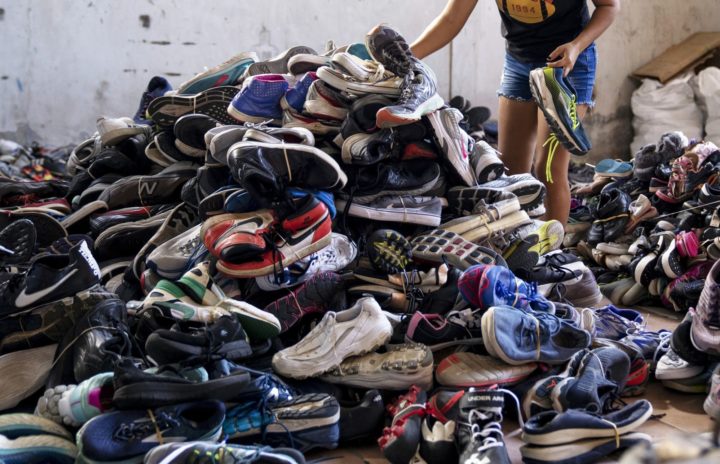Impact of Footwear on the environment

One of the most staggering production numbers that does not get enough publicity is the number of shoes we make and buy annually. Shoes that are a non-recyclable product. So, let’s start by pointing out some facts and figures.
In 2015, the worldwide footwear production reached 23 billion pairs. With a world population of 7.3 billion people, this directly translates to 3 new pairs of shoes annually per consumer. This already sounds like quite a lot but bear with us as we dig deeper.
Keeping in mind that in 2015 ten percent of the world’s population lived below poverty line ($1.9 per day) and more than one third of the world’s population lived on an estimated $10 a day, we can re-calculate that only about 4.2 bln people could be considered as a purchasing audience. This subsequently results in at least 5-6 new pairs of shoes annually per individual.
It needs to be noted that we are not differentiating in the above calculation between age groups or developed, developing and underdeveloped markets, which overall would increase this statistic to up to 20-25 pairs per consumer annually. Crazy, isn’t it?
What is more, according to the MIT study, a pair of running shoes made out of synthetic materials is a huge pollutant that contributes about 13.6kg of carbon dioxide emissions. This equates to an equivalent of leaving a 100-watt bulb switched on for 7 consecutive days and nights. Out of this, over two thirds are generated during the manufacturing stage.
Each shoe – whether running, casual or evening – will always consist of sole (includes: insole, mid-sole and outsole) and upper. These will further divide into: lining, tongue, eyelet, throat line, toe cap, welt, vamp, heel and quarter. As each of these elements needs to perform a different function and encompass divergent properties, a range of materials are used.
As a result, footwear is a multi-material market. This means that majority of shoe products are constructed with multiple materials, which – more often than not – make it impossible to recycle shoes at the end of their useful lives. One of the reasons are the hardships involved in the material separation.


To best exemplify, the particular pair of shoes studied by the MIT team – Asics gel Kayanos for men in size 9 – was made from 26 different materials and required 360 different steps to manufacture and assemble. Considering low tech and low complexity of the end product, these numbers best depict how unsustainable current practices are.
It’s a given that all 7.3 billion of us need shoes daily for the benefit of our posture, feet protection etc. Nevertheless, how many pairs do we need to own to be active and not compromise our lifestyles? And how can we find brands, which offer sustainable products?
In effect, as a consumer or designer, we need to educate ourselves on an informed sustainable selection process, which we wrote about in another article. If you want to read it, please click here.
Equipped with a comprehensive understanding of key elements and being educated on their meaning, a consumer can start by browsing through the readily available market options. Some of the sustainable solutions that are noteworthy include: sneaker collection initiatives, repurposing waste into products, replacing conventional materials with more sustainable alternatives etc. We will write about this in more detail next week, so stay tuned or get in touch if you just cannot wait!
Posted 01 August, 2010 by Katie Kubrak